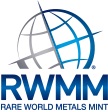The rare and elusive rhodium bullion is witnessing an unprecedented supply squeeze, sending prices soaring and making it one of the most sought-after precious metals in the world. With its critical role in industrial applications, particularly in the automotive, electronics, and chemical industries, the tightening availability of rhodium is creating waves in the investment market. For those looking to buy rhodium, understanding the forces driving this scarcity is essential for making informed decisions.
Why is Rhodium So Scarce?
Unlike gold or silver, rhodium is not mined as a primary metal. Instead, it is a byproduct of platinum and nickel mining, making its availability dependent on the production of these metals. Several factors contribute to its growing scarcity:
● Limited Mining Locations – Over 80% of the world's rhodium comes from South Africa, with smaller contributions from Russia and Canada. Any disruption in these regions drastically impacts supply.
● Declining Ore Grades – Mining operations are extracting lower-quality ores, reducing rhodium yield per ton.
● High Industrial Demand – The automotive industry, responsible for nearly 85% of rhodium consumption, relies on it for catalytic converters to reduce emissions.
● Lack of Recycling Efficiency – Unlike other precious metals, rhodium recycling rates are low due to its complex extraction process.
These supply constraints have led to extreme price volatility, making rhodium one of the most expensive and unpredictable metals on the market.

How Does the Auto Industry Influence Rhodium Prices?
The automotive sector is the largest consumer of rhodium bullion, using it to manufacture catalytic converters for internal combustion engines. Stricter global emission regulations have significantly increased rhodium demand, leading to supply shortages and skyrocketing prices.
● Emission Standards Tightening Worldwide – Governments in Europe, the U.S., and China are enforcing tougher regulations, requiring more rhodium per vehicle to meet compliance.
● Shift Toward Hybrid Vehicles – Even as electric vehicles gain popularity, hybrid models still require catalytic converters, sustaining rhodium demand.
● No Viable Substitutes – While platinum and palladium are used in similar applications, rhodium remains unmatched in its ability to break down nitrogen oxides efficiently.
With automakers securing rhodium supplies at record-high prices, investors are taking notice of the metal’s long-term value potential.
Is Rhodium a Smart Investment?
Given its rarity and industrial importance, buying rhodium has become an attractive option for investors seeking to hedge against market volatility. Here’s why rhodium is gaining traction as an alternative asset:
● Extreme Scarcity – With an annual global supply of just 30 tons, rhodium is rarer than gold and platinum.
● Explosive Price Potential – Rhodium has seen price spikes exceeding 3,000% in the past two decades.
● Growing Industrial Demand – As emission standards tighten, demand is expected to remain high.
● Lack of Speculative Trading – Unlike gold or silver, rhodium is less influenced by speculative investors, making its price more reflective of real-world supply and demand.
For those looking to buy rhodium, now may be the time to act before further supply constraints drive prices even higher.
What’s Next for Rhodium?
The future of rhodium bullion depends largely on supply chain stability and technological advancements. While electric vehicle adoption may reduce demand in the long run, it will take decades before the auto industry fully transitions away from catalytic converters. In the short to mid-term, expect continued volatility as supply remains unpredictable and industrial demand stays strong.
● Mining disruptions or geopolitical tensions could push rhodium prices even higher.
● Technological innovations may improve recycling rates, easing supply constraints.
● Investment interest in rare and strategic metals could further tighten availability.
As global industries compete for limited rhodium supplies, investors who act now may benefit from substantial price appreciation.
Conclusion:
Some investments are common; others are extraordinary. Rhodium is the latter. A metal so rare and indispensable that industries fight for every ounce. While some metals follow predictable trends, rhodium is rewriting the rules—its scarcity is legendary, and its price potential is unmatched.
Are you ready to position yourself in a market where rarity meets opportunity?
At Rare World Metals Mint, we offer premium rhodium bullion, ensuring you own a tangible asset that industries can’t function without.
Rarity has value, but only if you seize the moment. Secure your place in the future of precious metals with rhodium bullion from Rare World Metals Mint.
FAQs
What is 1 oz of rhodium worth?
As of March 17, 2025, the price of rhodium is approximately $5,550 per ounce.
What is rhodium bullion?
Rhodium bullion refers to bars or coins made from rhodium, a rare and precious metal in the platinum group. It is commonly used in catalytic converters and jewelry plating.
How much is 1 g of rhodium?
As of February 25, 2025, the price of rhodium is ₹14,625 per gram, which is roughly $4,975 per ounce. These prices can vary depending on factors like market fluctuations, purity levels, and the pricing strategies of different suppliers.
(Source link: https://choksiheraeus.com/todays_market_rate.php)
Is rhodium a better investment than gold?
Rhodium is typically considered a riskier investment compared to gold because of its price volatility and smaller, less liquid market. However, it can be a profitable investment for those willing to take on higher risk.
What is the disadvantage of rhodium?
The main drawbacks of rhodium, particularly when used for jewelry plating, are its high cost. Additionally, the rhodium plating can wear off over time, and if the metal underneath isn't of good quality, the plating might even chip or peel.






